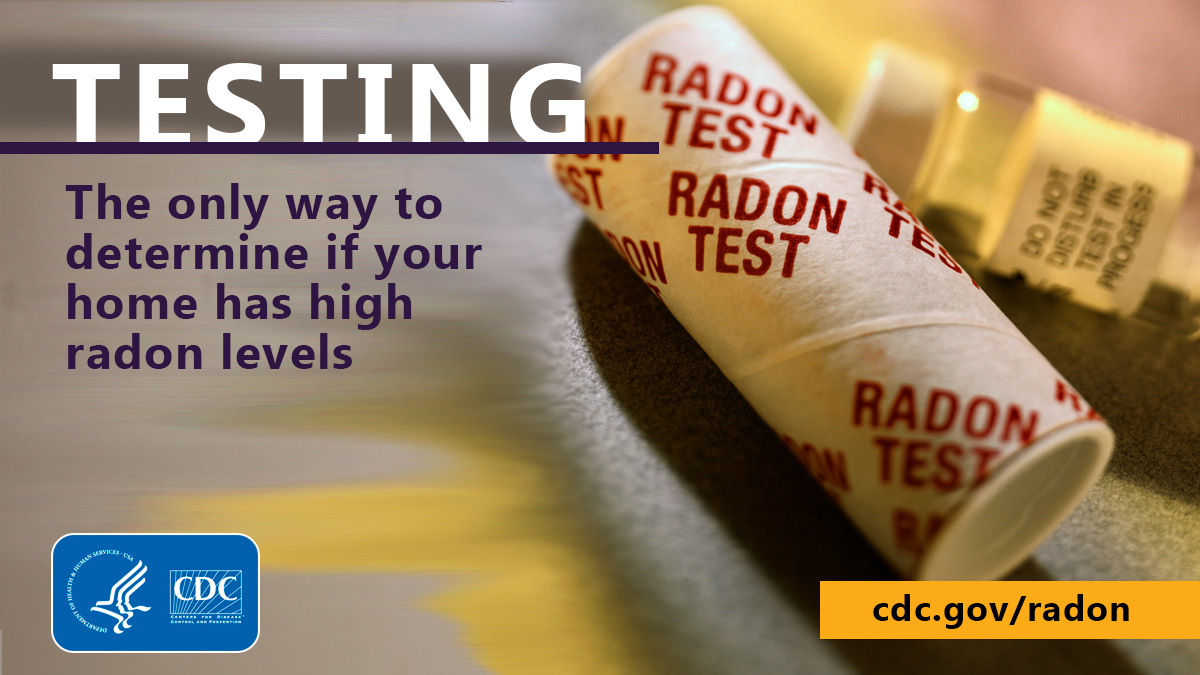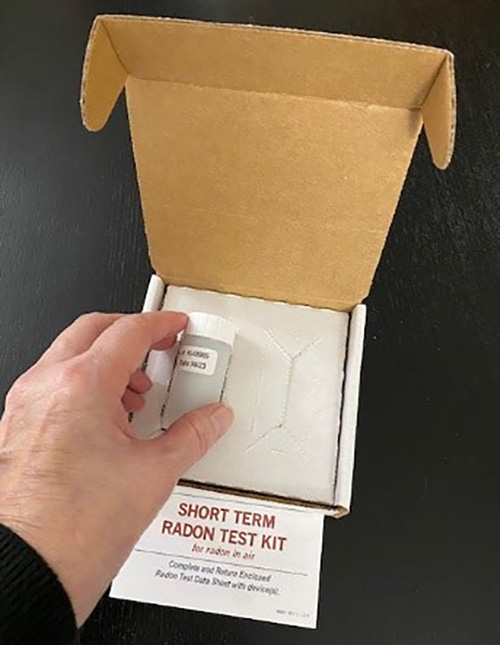

Testing your home is the only way to know if radon levels are high. If radon levels in your home are high, you and your family could be at risk for lung cancer from radon.
You should test your home's radon levels
Contact your state radon office for specific information and resources in your area for testing. They can provide you with a list of qualified radon testers. You can either hire a radon tester or purchase a radon test kit from a hardware store and do it yourself. However, the Environmental Protection Agency (EPA) recommends hiring a qualified tester if you are buying or selling your home.

There are two general types of radon test kits: short-term and long-term kits.
Short-term kits measure radon for 2–90 days for quick results.
Long-term kits measure radon in your home for over 90 days. Long-term kits tell you your home's year-round average level. The longer the test, the better the results will reflect your home radon levels and your lifestyle.
Your state radon office can give you information on where to get a test kit. Your state may offer free or discounted test kits. You can purchase a radon test kit online or in many retail or hardware stores. You can also order one through the National Radon Program Services .*
*The National Radon Program Services is maintained by Kansas State University through a Cooperative Agreement with EPA.
Radon is measured in units of picocuries per liter (pCi/L) of air. Radon is naturally found in outdoor air at very low levels and some radon will always be in your indoor air. According to EPA, the average radon level in American homes is about 1.3 pCi/L.
EPA recommends contacting a licensed professional to install a radon reduction system if your radon level is at or above 4 pCi/L of air. EPA also recommends taking action to reduce radon if your radon level is from 2 pCi/L through 4 pCi/L. There is no known safe level of radon. You should always aim to have the lowest radon levels to reduce the risk of lung cancer.
The level of radon in your home determines the actions you should take.
Higher than 4 pCi/LTo find out more about radon test kits, please see the EPA Radon Hotline and Information Resources .
If you are planning any major structural renovation, such as converting an unfinished basement area into living space, it is especially important to test the area for radon before you begin the renovation. If your test results indicate a radon problem, radon-resistant techniques can be included as part of the renovation. Because major renovations can change the level of radon in any home, always test again after work is completed.
For more information about testing your home, please visit: